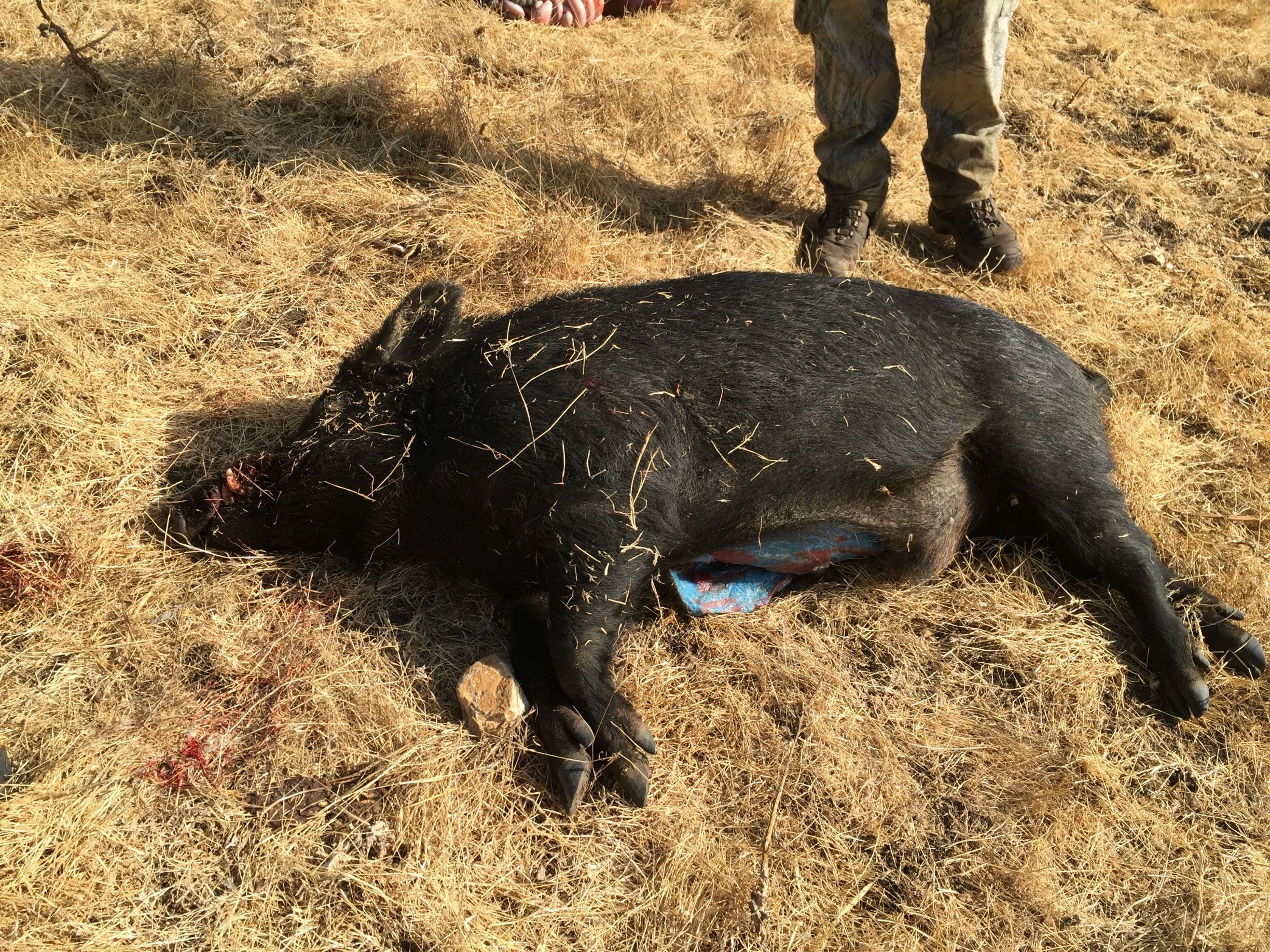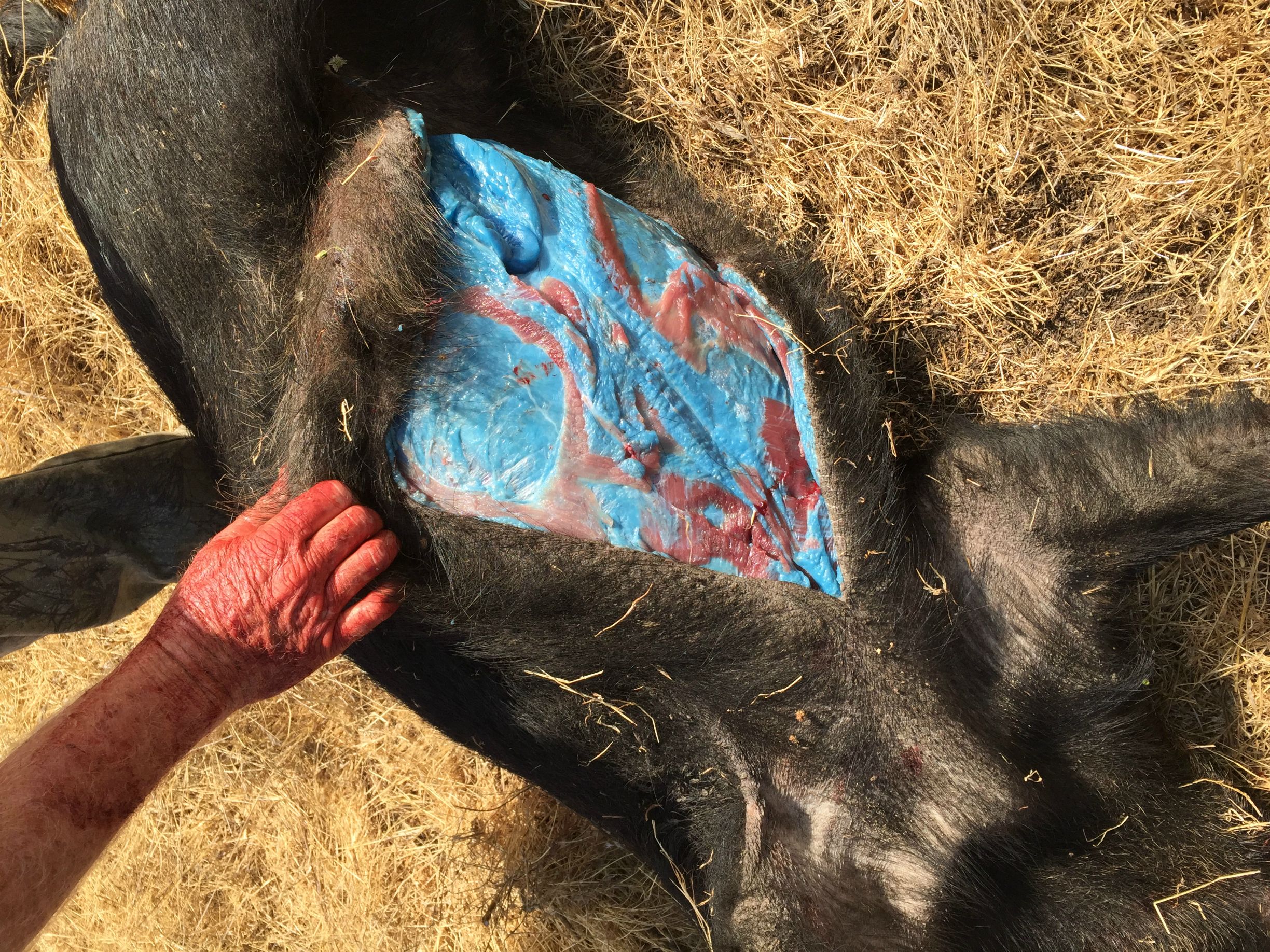Californian authorities have issued warnings after trappers once again reported finding wild pigs with “bright blue” flesh.
The California Department of Fish and Wildlife said it had received reports of the bizarre occurrence in March, and that the phenomenon is a sign that the animals have been poisoned.
“It’s wild,” Dan Burton, owner of Urban Trapping Wildlife Control, who first reported the oddly coloured flesh, told The Los Angeles Times. “I’m not talking about a little blue… I’m talking about neon blue, blueberry blue.”
A statement issued by the CDFW last week said that wild pigs in the Monterey County area had been exposed to pesticide bait containing the anticoagulant rodenticide Diphacinone, a poison that prevents blood from clotting and causes internal bleeding in rodents, ultimately killing them.
Blue tissue and flesh can be a sign of rodenticide ingestion, which can occur by eating bait – which often contain dye to identify them as poison – or other animals that have ingested the substance, the department said.

However, such blue discoloration may not always be present even in contaminated flesh.
“Hunters should be aware that the meat of game animals, such as wild pig, deer, bear and geese, might be contaminated if that game animal has been exposed to rodenticides,” said CDFW Pesticide Investigations Coordinator Dr. Ryan Bourbour.
“Rodenticide exposure can be a concern for non-target wildlife in areas where applications occur in close proximity to wildlife habitat.”

The emergence of blue pigs in California is not the first occurrence of the phenomenon. In September 2015, Imugur user GlendilTEK posted a series of images online titled “The Weird Pig” which were ultimately found to also have been poisoned with rodenticide.
In addition, a 2018 study of anticoagulant rodenticide exposure in game animals across California found anticoagulant rodenticide residue in just over 8 percent of the wild pig tissue samples collected largely from animals that were frequenting agricultural or residential areas where rodenticides are commonly/more likely to be utilized.
The same study found that 83 percent of the bear tissue samples contained the poison.







